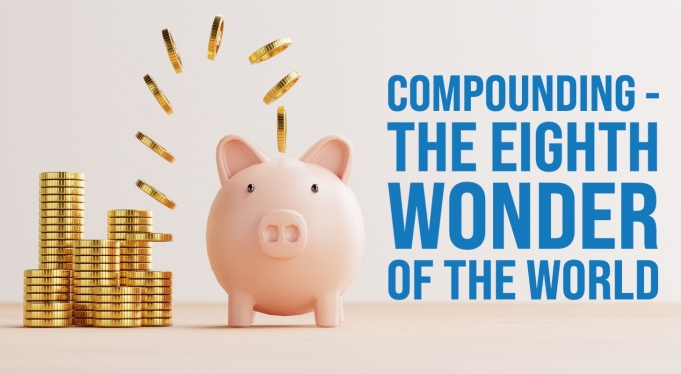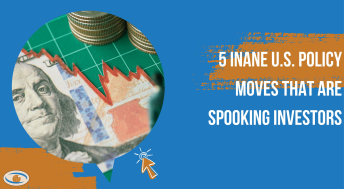Compounding and Exponential Growth
Compounding is essentially the same concept as exponential growth. When an investor earns 5% on a principal amount of $100,000, they earn $5,000, and if in the next year a 5% return is made on that $105,000, the investor would earn $5,250 - an additional $250. Here we can see the added return of $5,000 made from the first year begins to earn 5% in the second year, and so on and so forth into future years. As the years go by, that additional $250 gets larger and larger.
Most concepts that we as humans encounter in life are typically linear; age and time, weight, expenses, but thinking in terms of exponential growth can often be challenging. Let’s review the power behind compounding and exponential growth below:
Example 1: Physical Distance
Assuming the average human step length is about 2.5 feet, and someone was to walk 30 linear steps, they would be able to get around their office floor, or perhaps from upstairs to downstairs in their house. On the other hand, if someone were to take 30 exponential steps (doubling in length with every step) they would be able to get around the world, 20 times.
Example 2: Finances
An example of exponential growth using finances is the idea that if one were to double a penny every day for 30 days consecutively, the end result would be roughly $5,400,000. The interesting thought experiment with this example is that now knowing the end result is $5,400,000, naturally one would assume that the individual would have roughly $2,700,000 by the mid-point at day 15. But as we can see below, the investor would have only accrued $164 by day 15.
Example 3: Investments
When we hear about the importance of investing at an early age to take advantage of compounding returns, intrinsically we have an idea of how that works to our benefit, but the results between two distinct timeframes are quite staggering. For this example, we can look at two different investors, both earning a 10% annual rate of return, and both are contributing $200 a month ($2,400 a year). Investor #1 is invested for 40 years, starting at the age of 25 until 65, and investor #2 is invested for 30 years, starting at the age of 35 until 65. The difference between the two investors is $24,000 in additional contributions over the 10 years ($2,400 for an additional 10 years), however, investor #1 will have ~$1,100,000 by the age of 65, and investor #2 will have ~$400,000 by the age of 65. This wealth gap of $700,000 between the two investors is simply 10 years and $24,000 in contributions.
Visualizing Compounding Returns in an Investment Portfolio
The visual representation of contributing $2,400 a year, earning 10% a year, and ending with $1,100,000 by the age of 65 is impressive and the exponential growth curve is clear. Although, when we put this on a ‘logarithmic’ scale, the idea of exponential growth begins to become more clear. Both charts below are representing an investor contributing $2,400 a year and earning 10% a year from the age of 25 to 65. A linear scale has equal increments, and in this example, they are equal increments of $200,000. A log scale does not have equal increments, and rather the values get exponentially bigger (note the scale along the left goes from $20,000 to $200,000, to $2,000,000).
Exponential Growth for Stocks and Companies
Finally, to tie the concept of compounding returns and exponential growth into a business and the performance of a stock, we can look to Amazon as a prime example. The way that companies and businesses operate can be very similar to that of an individual investor; they take earnings made during the year and reinvest them back into the company so as to generate compounding returns. A company reinvesting its earnings is essentially performing the same compounding wealth effect that individuals are when saving for retirement or just in general. The chart on the left might give an investor pause as the price momentum may seem ‘unsustainable’, however, the chart on the right shows a business that is growing at a good pace and likely earning a return on its reinvested capital. Both charts are Amazon’s price history since inception - the chart on the left is linear and the right is logarithmic.
Conclusion
Viewing personal finances and stocks through the lens of ‘exponential growth’ is certainly not intuitive, although to truly understand the long-term benefits of investing and earning a good return, we must always seek to view these with an exponential mindset.
Research for today, invest for tomorrow.







Comments
Login to post a comment.